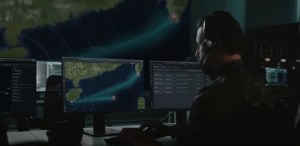The Pentagon Joint Staff wants its own chief data and AI office

BALTIMORE — In the wake of rapid advancements in artificial intelligence, the Defense Department’s Joint Staff is considering an internal office dedicated to helping the organization leverage emerging AI capabilities.
The Joint Staff stood up an AI task force in February, comprised of staff members from across the entire organization. And recently it completed a 90-day sprint to examine use cases for artificial intelligence applications, as well as long-term organizational structures needed within the Joint Staff for sustaining AI-enabled capabilities, according to Lt. Gen. Todd Isaacson, director for the Joint Staff’s J-6 Command, Control, Communications, Computers, & Cyber bureau.
As a result, the organization now wants its own in-house chief digital and artificial intelligence office, Isaacson said Thursday during a keynote speech at AFCEA’s TechNet Cyber conference.
“Currently we have a [chief data officer] and I serve as the [chief information officer], but we’re looking at ways to reorganize the Joint Staff to get after what I think is some open field running and a real opportunity for us to continue to evolve,” Isaacson said. “This was inward looking at the Joint Staff. As you might imagine, the outcomes were very, very promising.”
While he did not share any information regarding when the Joint Staff might try to stand up a CDAO, the intent represents a trend happening across the Pentagon regarding AI. The entire department is exploring how artificial intelligence and machine learning technologies can be used for military applications — including day-to-day administration tasks, data management assistance and operations.
The Joint Staff’s AI task force also conducted an internal review where they assessed the workflows of all eight directorates, analyzing them “in a decomposed state,” Isaacson said. The goal was to understand where existing AI-enabled capabilities from the commercial sector could be used to streamline the organization’s processes, he noted.
That also includes generative AI technology, he said. The subfield of artificial intelligence uses large language models to generate content based on prompts and data they are trained on.
“What we found in that 90-day sprint was we had more use cases than we could actually get after. So, we were super excited about that outcome,” Isaacson said.
The Joint Staff is on a larger path to improve modernization of both its own organization and the entire U.S. military — an effort spearheaded by Joint Chiefs of Staff Gen. Charles “CQ” Brown. Brown has directed the J-6 to take the lead on many of those efforts, and the directorate has recently established a campaign plan for digital modernization, Isaacson said.
He noted the effort is focused on four areas: developing, maintaining and attracting a digitally enabled workforce; improving the Pentagon’s networking infrastructure; acquiring advanced tools and capabilities; and rapid adoption of new technologies.
“One of the things that the department doesn’t do well is rapidly adopting, but we’re doing it better than we used to and we’re continuing to endeavor to make it better as we partner with our industry partners,” Isaacson noted.
He also said that the J-6 is constantly taking insights from the Global Information Dominance Experiments (GIDE).
Hosted by the Defense Department’s CDAO, the experiments are held in conjunction with combatant command exercises and are designed to test new capabilities for Combined Joint All-Domain Command and Control (CJADC2). The warfighting construct is designed to move data across distributed networks of sensors and weapons connected by faster communication, processing and decision layers informed by AI and ML.
“As we conduct those experiments, what we have found is that data integration — the tagging, the labeling, the exposure, the availability — is a key component to achieving the dominance in the information space that we described,” Isaacson noted. “Experimentation and demonstrations are at the center of everything that your joint force is doing as it relates to digital modernization.”






